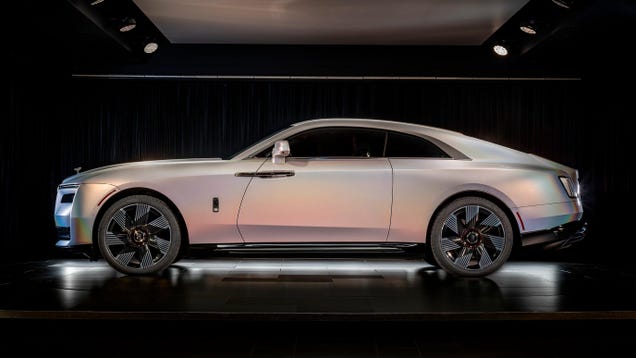Exploring the Intersection of Automotive Design and Space Inspiration
The allure of space has long captivated the human imagination, influencing various fields, including art, architecture, and, notably, automotive design. For enthusiasts and casual observers alike, the integration of extraterrestrial themes into car design not only showcases innovation but also reflects a deeper cultural fascination with the cosmos. This article delves into how automotive manufacturers are drawing inspiration from space, the implications of such designs, and what it means for the future of the automotive industry.
The Cosmic Influence on Car Design
Automakers have increasingly looked to the cosmos for inspiration, resulting in vehicles that embody elements of space exploration. This trend is evident in both the aesthetic choices and the materials used in car manufacturing. For instance, luxury brands like Rolls-Royce have introduced models featuring unique materials, such as trim made from moon rocks. This not only elevates the vehicle’s status but also connects the owner to the broader narrative of humanity’s quest to explore beyond our planet.
Recent studies indicate that consumers are increasingly drawn to products that tell a story or have a unique background. A 2022 survey by the Automotive Marketing Association found that 68% of car buyers are influenced by a vehicle’s story or inspiration. This suggests that the integration of space themes can enhance a car’s appeal, making it more than just a mode of transportation but a conversation starter and a symbol of innovation.
The Role of Advanced Materials in Automotive Design
The use of advanced materials inspired by space exploration is another fascinating aspect of this trend. Companies are experimenting with lightweight composites and durable materials that have been developed for aerospace applications. For example, carbon fiber and aluminum alloys, which are prevalent in spacecraft, are now being utilized in high-performance vehicles to improve efficiency and performance.
A notable case is the use of carbon nanotubes in the construction of electric vehicles, which can significantly reduce weight while maintaining strength. This innovation not only enhances the vehicle’s performance but also contributes to sustainability efforts, as lighter cars tend to consume less energy. The automotive industry is increasingly recognizing the importance of sustainability, with a report from the International Energy Agency indicating that electric vehicles could account for 30% of global car sales by 2030.
Consumer Interest in Space-Inspired Vehicles
The fascination with space is not limited to luxury vehicles. Economy cars are also adopting design elements that reflect a cosmic influence. For instance, manufacturers are incorporating sleek, aerodynamic shapes reminiscent of spacecraft, appealing to consumers’ desire for modernity and efficiency. Additionally, color palettes inspired by celestial bodies—such as deep blues, silvers, and iridescent finishes—are becoming popular among mainstream models.
This trend is further supported by consumer behavior studies that reveal a growing interest in unique and personalized vehicles. According to a 2023 report by the Automotive Consumer Insights Group, 75% of younger consumers are willing to pay a premium for vehicles that feature distinctive designs or materials. This shift indicates a potential market for space-inspired vehicles across various price points, not just in the luxury segment.
The Future of Automotive Design: A Cosmic Perspective
As we look to the future, the influence of space on automotive design is likely to expand. With advancements in technology and materials science, we can expect to see even more innovative designs that push the boundaries of traditional automotive aesthetics. The integration of augmented reality (AR) and virtual reality (VR) in vehicle design processes may also allow for more creative expressions inspired by space.
Moreover, as humanity continues to explore the cosmos, the stories and materials derived from these endeavors will likely inspire new generations of car designers. The collaboration between automotive manufacturers and space agencies could lead to groundbreaking innovations that redefine what vehicles can be.
In summary, the intersection of automotive design and space inspiration is a rich and evolving narrative that reflects our collective curiosity and ambition. As manufacturers embrace this trend, they not only create visually stunning vehicles but also foster a deeper connection between consumers and the wonders of the universe. The future of automotive design promises to be as limitless as space itself, inviting us all to dream beyond the horizon.

